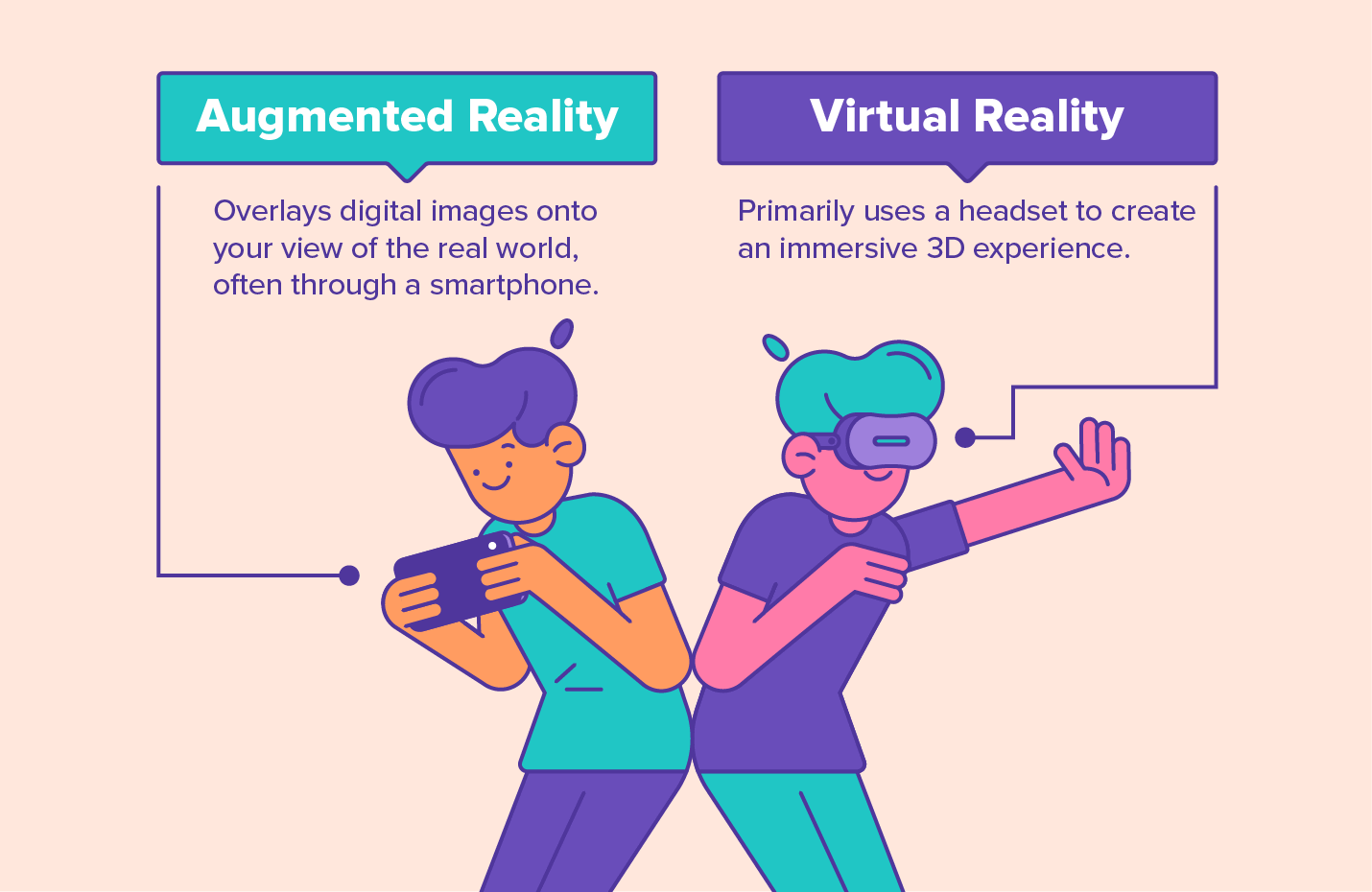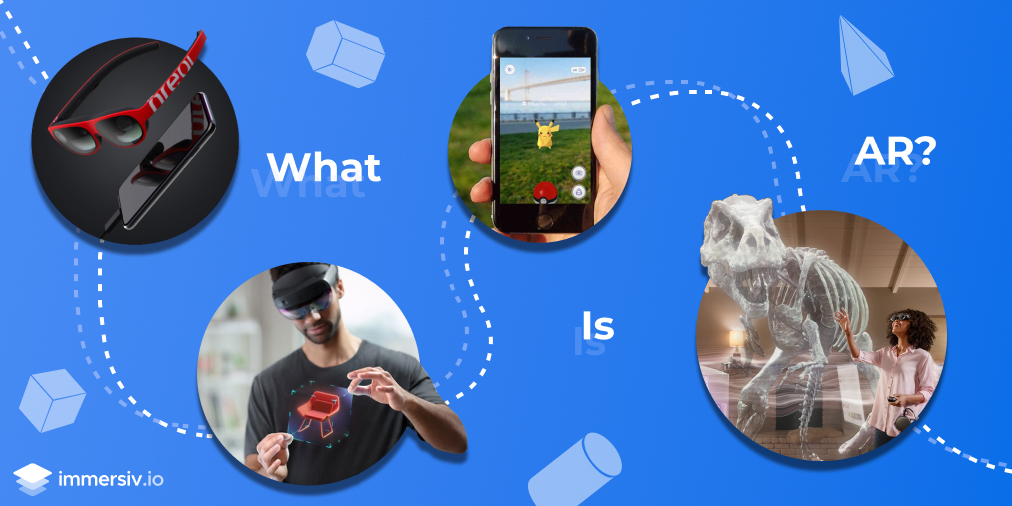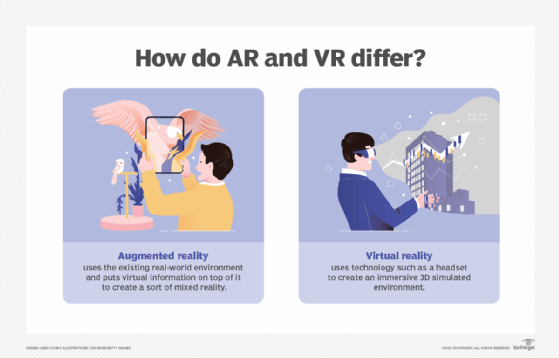Augmented Reality (AR) is a technology that overlays digital information onto the real world. It enhances the user’s perception of reality through visual, auditory, or other sensory inputs.
AR blends virtual elements with the physical environment, creating an interactive experience. This technology is used in various fields such as gaming, education, and retail. For instance, AR apps can display information about a product when viewed through a smartphone.
In education, AR can bring textbooks to life with 3D models and animations. The technology relies on devices like smartphones, tablets, and AR glasses. With its growing popularity, AR is transforming how we interact with the world around us. It offers endless possibilities for innovation and engagement.

Credit: clevertap.com
Introduction To Augmented Reality
Augmented Reality (AR) blends digital objects with the real world. This technology enhances our perception by adding layers of information. It makes experiences more interactive and immersive. AR is revolutionizing various fields, from gaming to education.
Origins Of Ar
The concept of AR began in the 1960s. Ivan Sutherland created the first AR system called “The Sword of Damocles”. This system used a head-mounted display. In the 1990s, Tom Caudell coined the term “Augmented Reality”. By then, AR applications had expanded to aviation and military training.
Basic Concepts
AR works by overlaying digital content onto the real world. This is achieved using devices like smartphones and AR glasses. Cameras and sensors capture the real environment. Then, software processes this data to display virtual objects. Here are some key components:
- Tracking: Identifies and follows real-world objects.
- Rendering: Generates the digital content.
- Interaction: Allows users to engage with virtual elements.
AR can be applied in various sectors:
- Education: Interactive learning experiences.
- Healthcare: Enhanced medical training.
- Retail: Virtual try-ons and product previews.

Credit: www.immersiv.io
How Ar Works
Augmented Reality (AR) merges digital content with the real world. To understand AR, let’s look at how it works. This involves both hardware and software components working together.
Hardware Requirements
AR requires specific hardware to function smoothly. The essential components include:
- Camera: Captures the real-world environment.
- Processor: Handles the computing tasks needed for AR.
- Display: Shows the augmented content.
- Sensors: Track motion and orientation, like gyroscopes and accelerometers.
Modern smartphones and tablets often have these components. AR glasses and headsets are also common.
Software And Algorithms
The software is the brain behind AR. It uses complex algorithms to blend digital content with the real world. The process involves:
- Computer Vision: Understands and processes the real-world environment.
- Tracking: Keeps digital content aligned with real-world objects.
- Rendering: Displays the digital content seamlessly over the real world.
AR apps and platforms like ARKit and ARCore make this possible. These tools provide developers with the necessary resources to create AR experiences.
Here is a quick comparison of popular AR platforms:
| Platform | Developer | Supported Devices |
|---|---|---|
| ARKit | Apple | iOS Devices |
| ARCore | Android Devices | |
| Vuforia | PTC | Multiple Platforms |
These platforms provide a range of tools and libraries. They simplify the development process, making AR accessible to more creators.
Applications In Everyday Life
Augmented Reality (AR) is transforming our daily experiences. It blends the digital world with the real world, enhancing how we interact with our environment. Let’s explore some key applications of AR in everyday life.
Retail And Shopping
In the retail sector, Augmented Reality is revolutionizing shopping experiences. Customers can try on clothes virtually. They can see how furniture looks in their homes without lifting a finger.
- Virtual Fitting Rooms: Shoppers try on clothes without stepping into a store.
- Interactive Store Displays: Customers get detailed product information with a glance.
- Home Visualization: Users see how products fit in their space using a smartphone.
AR makes shopping more engaging and convenient.
Education And Training
AR is also making a big impact in education and training. It provides interactive and immersive learning experiences.
In classrooms, students can explore 3D models of historical sites or human anatomy. This makes learning fun and memorable.
| Application | Benefits |
|---|---|
| 3D Models | Helps students understand complex concepts visually. |
| Interactive Lessons | Engages students and keeps their attention. |
| Virtual Field Trips | Allows students to visit places they can’t physically go. |
In training, AR helps workers learn new skills quickly. They can practice tasks in a safe, controlled environment.
- Maintenance Training: Workers learn to repair machines using AR instructions.
- Medical Training: Doctors practice surgeries on virtual patients.
- Safety Drills: Employees experience emergency scenarios without real danger.
AR in education and training enhances understanding and retention.
Impact On Industries
Augmented Reality (AR) is transforming various industries by enhancing user experiences. It blends digital information with the real world. This innovative technology offers unique benefits across different sectors.
Healthcare
Augmented Reality is revolutionizing the healthcare industry. Medical professionals use AR for better diagnosis and treatment. Surgeons can view 3D models of organs during operations. This increases precision and reduces risks.
AR helps in medical training as well. Students can interact with virtual patients. This hands-on experience is invaluable. It improves learning and retention. Moreover, AR can assist in rehabilitation. Patients use AR-based exercises to recover faster.
| Application | Benefit |
|---|---|
| Surgical Assistance | Increased Precision |
| Medical Training | Enhanced Learning |
| Rehabilitation | Faster Recovery |
Entertainment
The entertainment industry is embracing Augmented Reality. AR enhances gaming experiences. Players interact with digital elements in the real world. This makes games more immersive and exciting.
AR also improves live events. Spectators can enjoy interactive shows. They can see additional content through AR devices. This adds a new dimension to concerts and sports events. Museums and theme parks use AR for engaging tours. Visitors can see historical events or characters come to life.
- Enhanced Gaming
- Interactive Live Events
- Engaging Museum Tours
Ar In Gaming
Augmented Reality (AR) is reshaping the gaming world. AR blends virtual elements with the real world. This creates immersive experiences. Let’s dive into the fascinating realm of AR in gaming.
Popular Ar Games
Many AR games have captured players’ hearts. They combine real-world exploration with virtual fun. Here are some top AR games:
- Pokémon GO: Catch Pokémon in real locations.
- Ingress: Explore and capture portals in your city.
- Harry Potter: Wizards Unite: Cast spells and discover magical artifacts.
- Jurassic World Alive: Find and collect dinosaurs in your neighborhood.
Future Trends In Ar Gaming
AR gaming is evolving rapidly. Here are some exciting future trends:
| Trend | Description |
|---|---|
| Enhanced Interactivity | Games will have more interactive elements. This makes gameplay more engaging. |
| Social Integration | Players can connect and play with friends. This fosters community and teamwork. |
| Wearable AR Devices | Glasses and other wearables will improve the AR experience. They offer hands-free interaction. |
| AI Integration | AI will create smarter, adaptive game worlds. This leads to personalized experiences. |
AR in gaming is just getting started. The future holds endless possibilities. Stay tuned for more incredible AR games!
Challenges And Limitations
Augmented Reality (AR) has revolutionized our interaction with the digital world. Despite its many benefits, AR faces several challenges and limitations. These issues impact its adoption and effectiveness. Let’s explore the main hurdles AR technology encounters.
Technical Hurdles
AR technology requires powerful hardware and software. Devices need high processing power and storage. This can be expensive and limit accessibility.
Another challenge is accurate tracking. AR apps need precise data to place virtual objects correctly. Errors in tracking can disrupt the user experience.
Battery life is a major concern. AR applications consume a lot of power. This can lead to shorter usage times and frequent recharging.
Network dependency is also a challenge. AR apps often need fast and stable internet connections. Poor connectivity can cause delays and glitches.
Ethical And Privacy Concerns
AR can collect a lot of user data. This raises privacy issues. Users may feel uncomfortable sharing their location and personal information.
There are also ethical concerns. AR can blur the lines between reality and virtual content. This can lead to misinformation and manipulation.
Another concern is data security. Sensitive information collected by AR apps can be vulnerable to hacking. This poses a risk to user privacy and safety.
Finally, there are social implications. AR can create distractions and reduce face-to-face interactions. This can affect personal relationships and social skills.
| Challenge | Description |
|---|---|
| Technical Hurdles | High hardware costs, tracking accuracy, battery life, network dependency |
| Ethical and Privacy Concerns | Data privacy, misinformation, data security, social implications |
Future Of Augmented Reality
The future of Augmented Reality (AR) looks incredibly promising. With rapid advancements in technology, AR is set to revolutionize various industries. From healthcare to entertainment, the potential applications are endless. Let’s explore the emerging technologies and predictions shaping the future of AR.
Emerging Technologies
Several cutting-edge technologies are driving the evolution of AR:
- 5G Connectivity: Faster internet speeds enable seamless AR experiences.
- AI Integration: Artificial Intelligence enhances AR’s interactive capabilities.
- Wearable Devices: Smart glasses and other wearables make AR more accessible.
- Cloud Computing: Cloud services provide the necessary computational power.
Predictions And Trends
Experts predict several exciting trends in AR:
- Enhanced Shopping: AR will transform online and offline shopping experiences.
- Education: Interactive AR lessons will make learning more engaging.
- Healthcare: AR will assist in complex surgeries and diagnostics.
- Gaming: More immersive and interactive gaming experiences are on the horizon.
Below is a table summarizing key future trends in AR:
| Industry | Future Trend |
|---|---|
| Retail | Virtual Try-Ons |
| Healthcare | Surgical Assistance |
| Education | Interactive Lessons |
| Gaming | Immersive Experiences |
The future of AR is bright, with many exciting developments on the horizon. Stay tuned as these technologies continue to evolve and reshape our world.

Credit: www.techtarget.com
Frequently Asked Questions
What Is Augmented Reality?
Augmented Reality (AR) is a technology that overlays digital content onto the real world. It enhances the user’s perception of reality by adding images, sounds, and other sensory inputs through devices like smartphones and AR glasses.
How Does Augmented Reality Work?
AR works by using sensors, cameras, and algorithms to detect and track real-world objects. It then overlays digital content onto these objects, creating an interactive experience. The technology uses the device’s camera and motion sensors to place the digital elements accurately.
What Are The Uses Of Augmented Reality?
Augmented Reality is used in various fields like gaming, education, healthcare, and retail. In gaming, it creates immersive experiences. In education, it provides interactive learning. In healthcare, it assists in surgeries. In retail, it helps in virtual try-ons.
What Devices Support Augmented Reality?
Devices that support Augmented Reality include smartphones, tablets, and AR glasses. Most modern smartphones and tablets come with AR capabilities. AR glasses like Microsoft HoloLens and Google Glass provide hands-free AR experiences.
Conclusion
Augmented Reality transforms how we interact with the world. It blends digital elements into our real environment. This technology enhances experiences across various fields. From gaming to education, its applications are vast. Embracing AR can lead to innovative solutions and enrich everyday life.
Stay curious and explore the endless possibilities of Augmented Reality.



